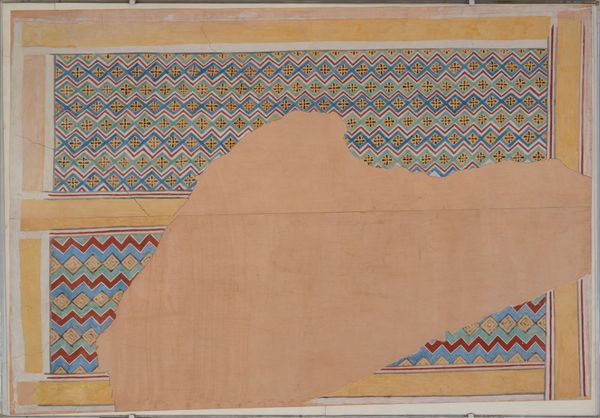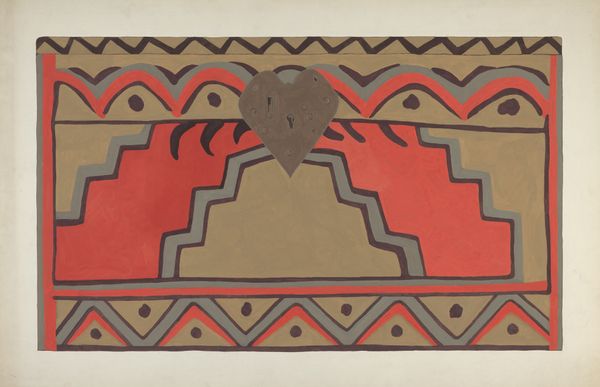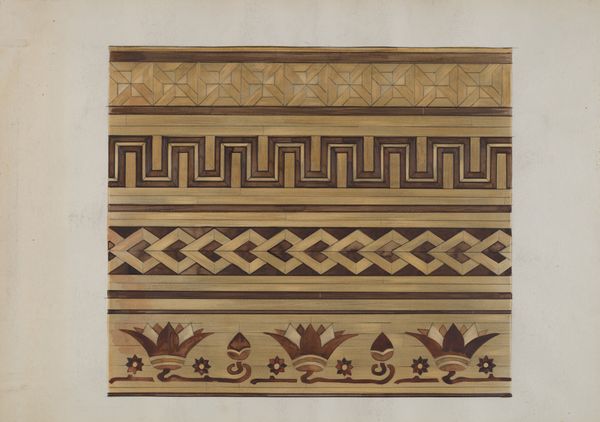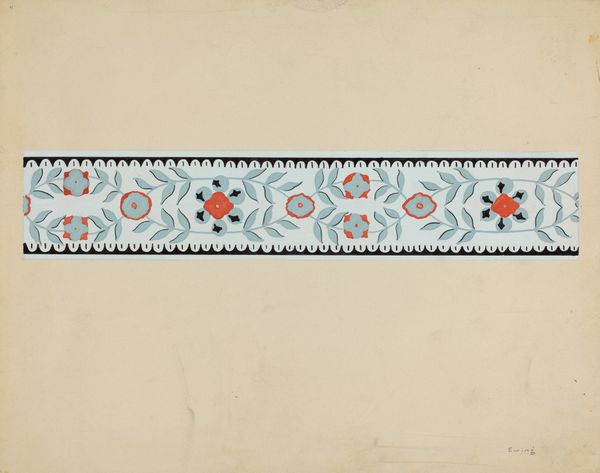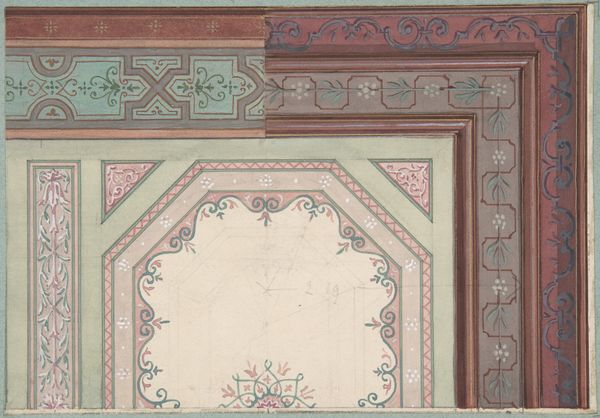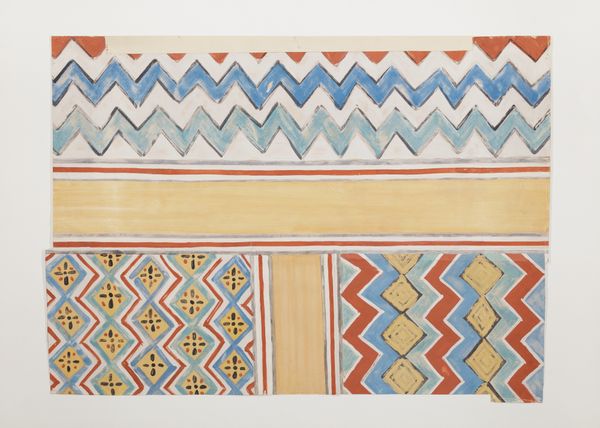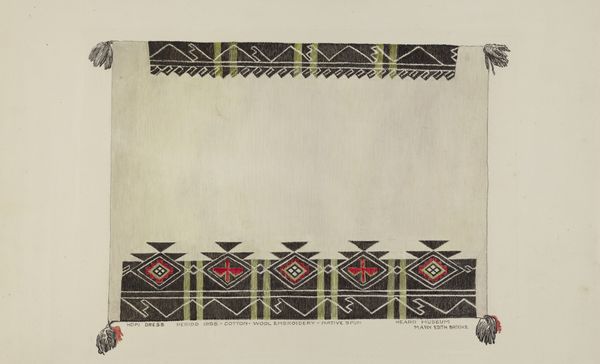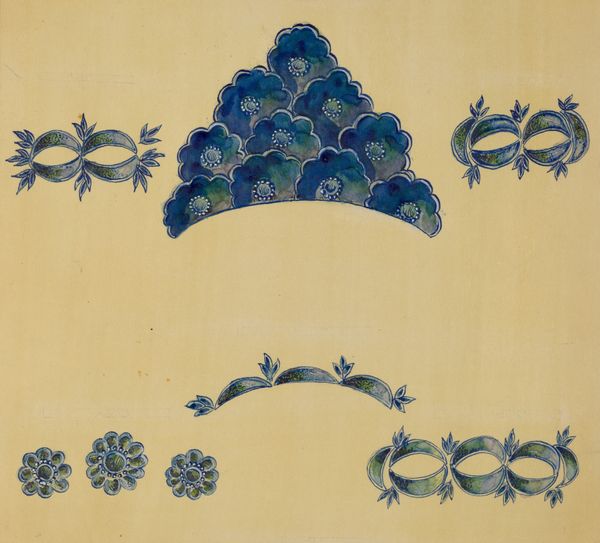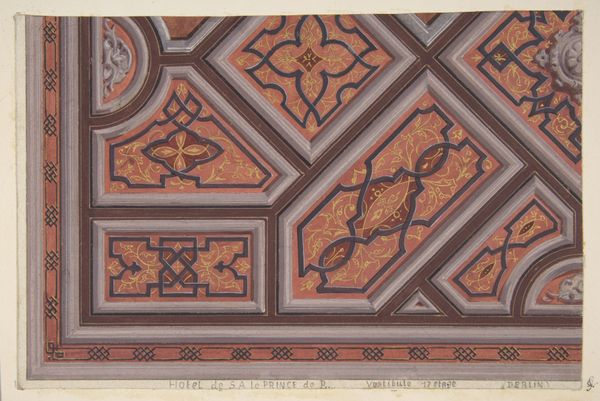
drawing
#
art-deco
#
drawing
#
geometric
#
decorative-art
Dimensions: overall: 22.8 x 29 cm (9 x 11 7/16 in.) Original IAD Object: 4 1/4" wide
Copyright: National Gallery of Art: CC0 1.0
Curator: Here we have a drawing titled "Wall Paper Border," created around 1937 by Paul Farkas. The design showcases geometric forms that blend Art Deco and decorative art sensibilities. What is your immediate reaction to this piece? Editor: Well, it definitely evokes a feeling of restrained opulence. The color palette, browns and blacks punctuated by a pale blue, hints at luxury but the simple repetition of the pattern grounds it, I would say. Does this resonate with its time period, late 1930s? Curator: Indeed. Consider the context: this design emerged during the tail end of the Art Deco era, after the Great Depression was beginning to abate. There’s a fascinating duality at play. The stylized wave forms, the meticulous dotting – all these elements gesture toward affluence, a symbolic return to order, and aesthetic control during difficult times. It also invokes architectural forms with soft curvature. Editor: It strikes me that the wavy forms, along with the strategically placed circular dots, echo natural motifs, despite the artwork’s overall geometric nature. How do you interpret that interplay between organic and inorganic forms? Curator: Precisely! These soft organic elements can represent stability, even growth. I interpret the dots, which add structure, as representing potential – seeds waiting to sprout or beads strung carefully together for decoration and value. The choice of subdued tones of tan and brown reinforces its link to the natural, which perhaps would have soothed people during an unstable economy. The crisp geometry makes this image visually palatable. Editor: The wallpaper's repeated forms signal a type of rhythm and control that may also provide a measure of mental comfort in chaotic times, wouldn’t you agree? I am particularly fascinated by how a design meant for private interiors inevitably communicates the prevailing social moods of its time. Curator: Absolutely. Interior spaces were where we had some autonomy and therefore had a certain impact. This wall paper serves not only a functional purpose to beautify spaces but communicates a specific idea, reflecting a desire for a stable environment, making it relevant to socio-economic events. Editor: A subtle but evocative visual document. I would love to know more about its reception during its time. Curator: It provides a tangible reflection of cultural hope and recovery, which I think we both found in this wallpaper.
Comments
No comments
Be the first to comment and join the conversation on the ultimate creative platform.
